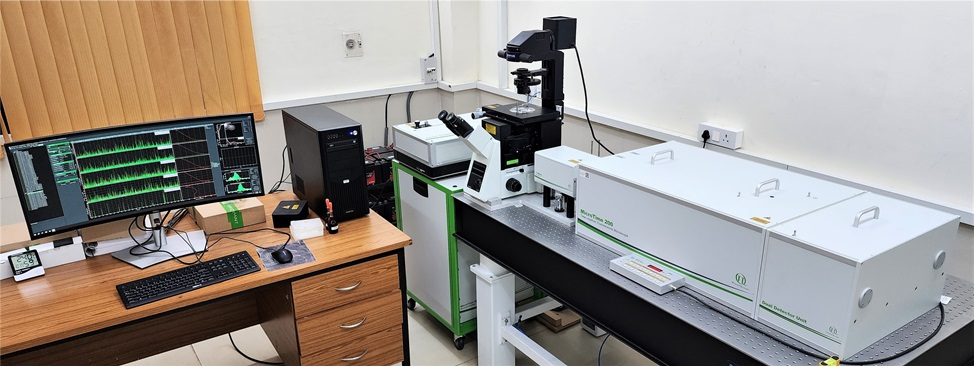Scientists have unraveled the molecular mechanism of protein phase transitions associated with physiological functions and diseases. These unique molecular insights can potentially help the design of therapeutic agents that can prevent pathological phase transitions responsible for fatal neurological diseases.
Highly regulated intracellular phase separation of proteins controls the formation of membrane-less biomolecular condensates that are required for cellular functions. This process, if unregulated, can result in aberrant protein phase transitions into pathological aggregates that are the hallmarks of Amyotrophic Lateral Sclerosis (ALS), Alzheimer’s and other fatal neurodegenerative diseases. This has drawn the attention of several scientists over biological phase separation and the mysteries behind their fundamental mechanism. Owing to the intrinsic flexibility and dynamism of the constituent disordered proteins involved in phase separation, conventional bulk experiments involving multiple molecules are inadequate in capturing the inherent complexity in the process.
Hence scientists from Indian Institute of Science Education and Research (IISER) Mohali, used single-droplet single-molecule FRET (Förster Resonance energy transfer) to shed light on the exquisite inner workings of the liquid-like condensates that are formed through weak, transient but stereospecific intermolecular interactions between highly flexible polypeptide chains possessing multivalency. They found that the structural unwinding exposes the multivalency of polypeptide chains that promotes the transient interactions between flexible protein molecules resulting in biomolecular condensate formation.
The study led by Dr Samrat Mukhopadhyay revealed crucial molecular events during the phase separation of an intrinsically disordered, prion-like, low-complexity domain of Fused in Sarcoma (FUS) – a protein that is associated with ALS.
The single-molecule FRET studies supported by SUPRA programme of Science, Engineering and Research Board (SERB), an attached institutions of Department of Science and Technology (DST) showed that a critical segment of the FUS protein in the monomeric form exists as two structurally distinct subpopulations directed by weak interactions within a protein molecule. During phase separation, a symphony of structural unwinding events turns these interactions into dynamic crosslinks of intermolecular contacts ensuing the formation of liquid droplets. Additionally, a disease-related mutation introduces enhanced structural plasticity engendering greater interchain interactions that can promote liquid-to-solid transitions and accelerate pathological aggregation.
The study published in Nature Communications captured the crucial molecular events associated with phase separation. Such molecular insights can help the design of small molecules that can potentially alter the protein phase behavior leading to a potent therapeutic strategy against devastating neurodegenerative diseases associated with aberrant phase transitions.

Single-molecule microscopy facility at IISER Mohali

The IISER Mohali team (from the left to the right): Sandeep Rai, Snehasis Sarkar, Samrat Mukhopadhyay, Ashish Joshi, Lisha Arora, Anuja Walimbe, and Anamika Avni (who is currently a postdoctoral fellow at the Scripps Research Institute, California, USA).






























